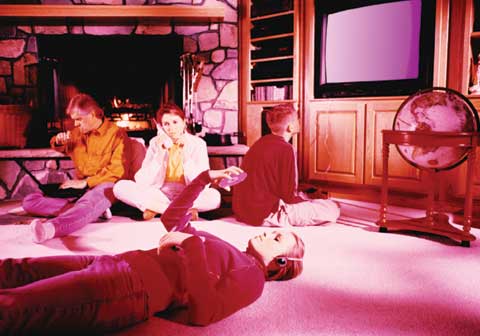
Critical Mass Media

If only 11.5% of television households are watching network programming, the corollary is that nearly 9 out of 10 of us are doing something we find more entertaining. It could be watching a cable channel or a movie from Netflix or Redbox. We could be surfing the Internet… playing a video game… or engaging with others via one of the social platforms.
Are you watching less of your favorite network television programs these days? There are two ways to answer that question, and both of them are yes.
In the first case, you are definitely watching less because there’s less to watch. The ratio between program content and commercial time has been shifting for years, as most of us have noticed. The last time I checked, scripted one-hour shows are produced to be between 40 and 42 minutes in length, allowing 18 to 20 minutes for advertising spots. That’s as much as 33% of your hour.
When we get into unscripted reality programs, where the show length is arbitrary, the ratio gets even worse, with commercial breaks eating up 40% or more of the viewing hour. So, yes, you are definitely seeing less show than you once did for your invested 60 minutes.
What about the second case? You are, along with everyone else, watching less network television. I read some alarming statistics on network television programming recently–alarming, that is, for the networks. Back in 2005, prime time combined viewership for the five networks (CBS, NBC, Fox, ABC and CW) averaged 16.5% of all TV households. This year, that number has dropped to 13.5%. That’s without taking into account the prevalence of commercial-zapping DVRs and online viewing. When you factor that in, the number of households in which people actually sit through the commercials drops to 11.5%. And remember, that’s for all five networks combined. Put another way, nearly a third of the live, commercial-viewing audience has disappeared over the past seven years.
Obviously, these two issues are interrelated, and the resulting economics are readily apparent. The rates that networks can charge advertisers are based on viewership: less people watching results in lower rates per commercial spot. In order to stay profitable the networks must (A) sell more commercials and/or (B) air shows that are less costly to produce. Option B, of course, is responsible for the increasing presence of unscripted reality TV programming and talk shows. The two options actually work well together: with no script or plot to keep track of you’re much less likely to feel lost when returning from four or five minutes of mind-numbing commercials.
What remains to be seen is whether cheap programming offers true salvation or is simply slowing down an unavoidable death spiral. Last month’s season finales of American Idol and Dancing With The Stars both received their lowest ratings ever, and viewership for the premier of ABC’s Duets was very disappointing. If America is wearying of this brand of entertainment (and we do eventually get tired of everything) the picture for the networks becomes bleak. Without popular programming to draw viewers their rates will sink lower, and they’re pretty much maxed out on the number of commercial spots they can pack into an hour of airtime.
The question is whether or not the mass media model upon which the networks were built can be sustained in the face of increasing audience fragmentation. It provided a shotgun approach to reaching an audience based completely on numbers. If only 11.5% of television households are watching network programming, the corollary is that nearly 9 out of 10 of us are doing something we find more entertaining. It could be watching a cable channel or a movie from Netflix or Redbox. We could be surfing the Internet… playing a video game… or engaging with others via one of the social platforms. Why, we might even be going and talking to each other directly (OMG!!!). Not only do these activities compete for time with network television, many offer more targeted opportunities for advertising messages.
I don’t see the networks folding up shop anytime soon. There are still advertisers and messages that need to reach a broadly defined mass audience. However, as more effective ways of reaching discrete marketing targets evolve, the network audience will ultimately fail to reach the critical mass it requires.
